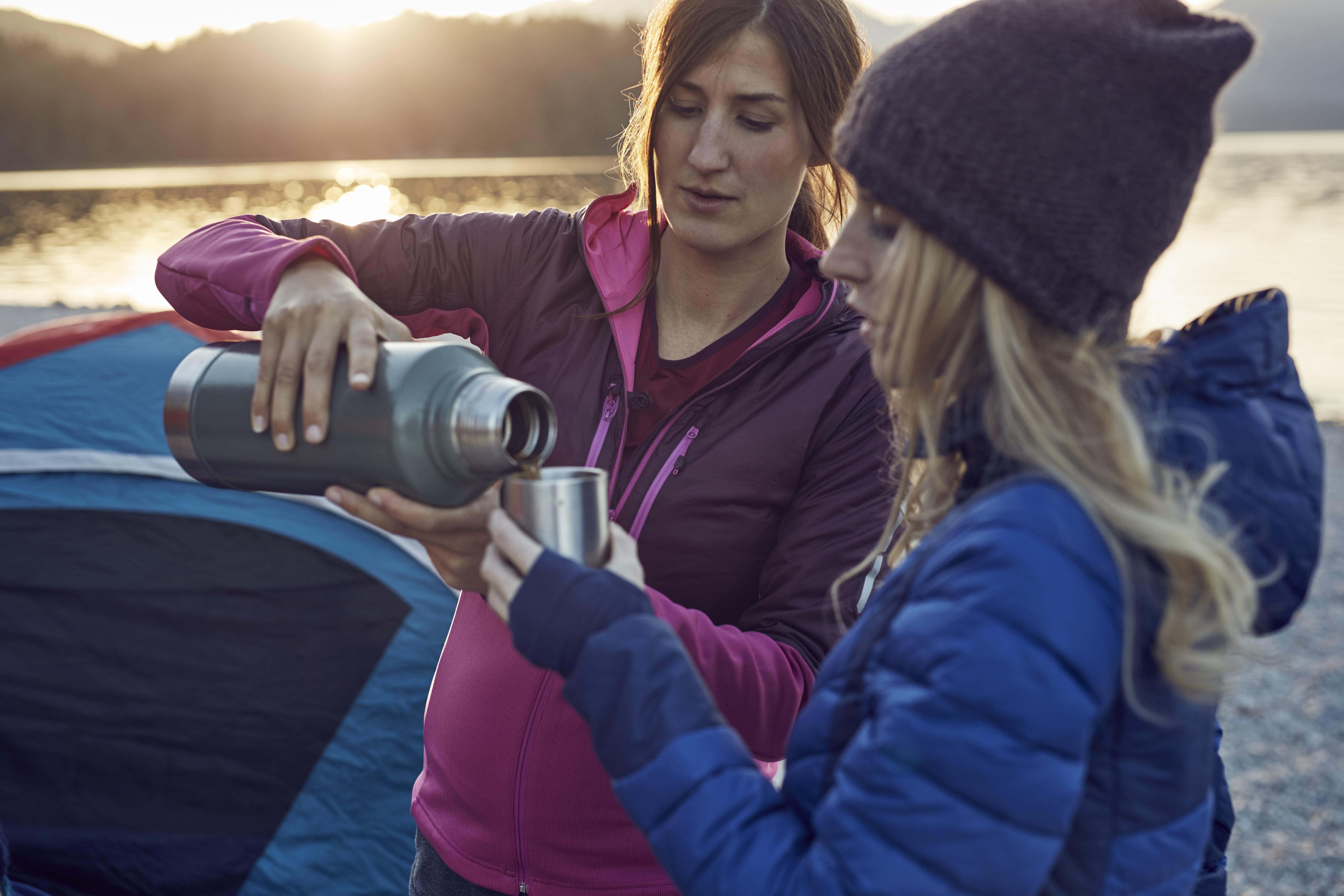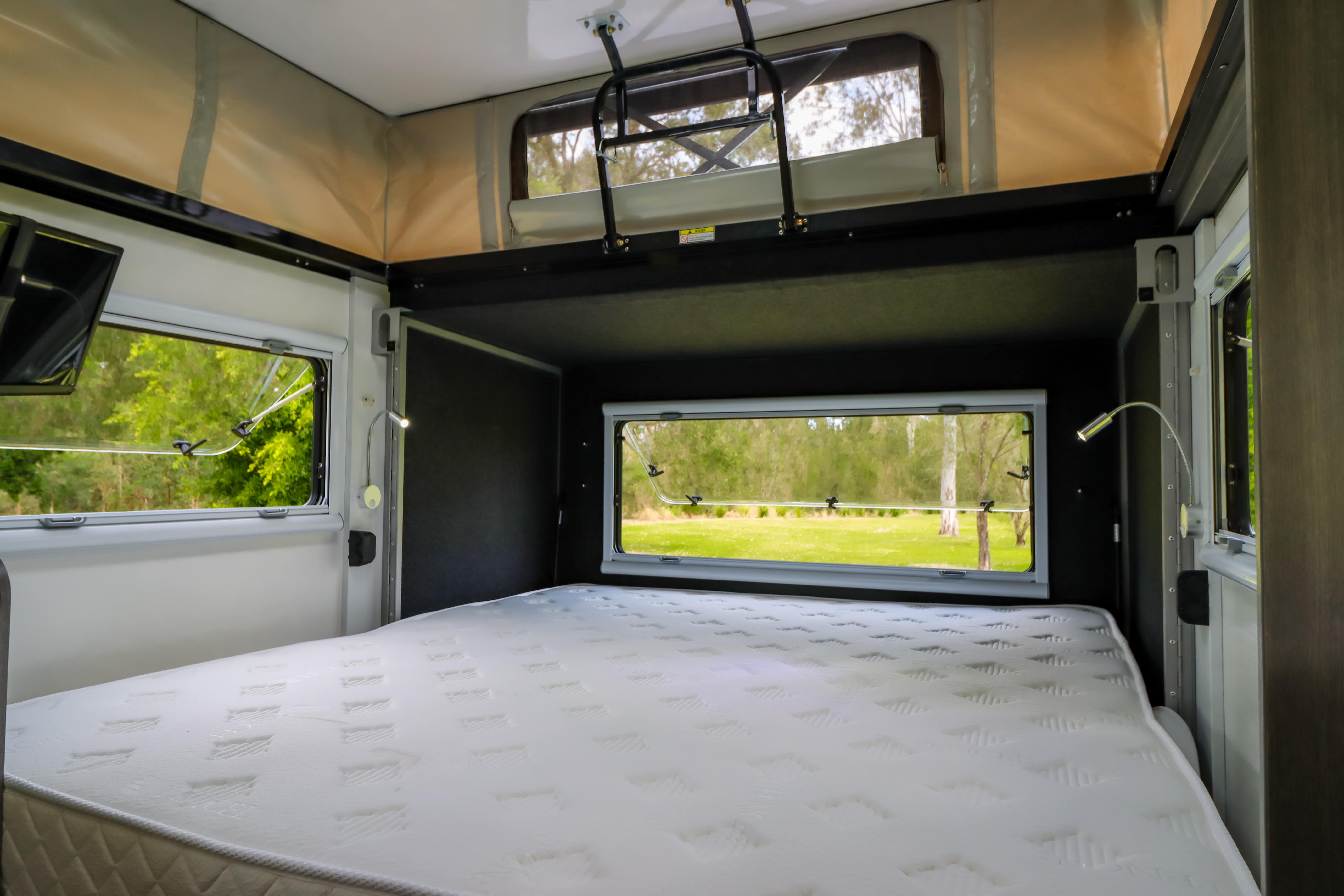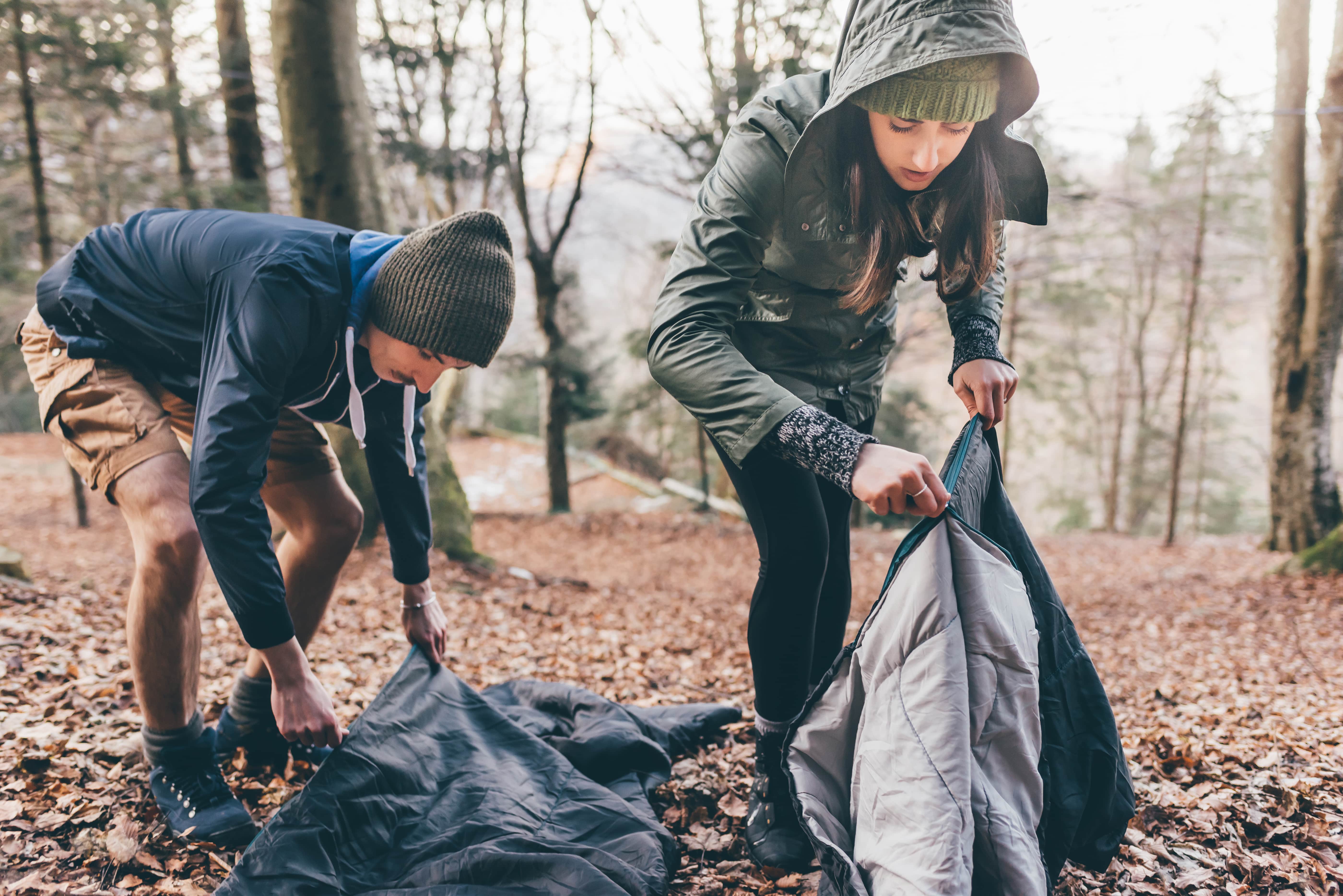Now that we’re approaching the cooler months, your eagerness to head out into the wilderness might be affected and that’s ok! You might have tried camping in Winter a few times and it didn’t stick as well as you would’ve wanted it to, or you might be someone who has just gotten into the camping lifestyle and isn’t too sure how to navigate the cold.
Whichever category you fall into, you’ll want to keep on reading for our best camping tips! After all, camping equipment is a big investment so if you can head out into the great outdoors all year ‘round, it’ll be even better for your pockets.
1 Invest in Better Gear
This is probably not the first tip you want to hear as we all know how quality camping gear can add up and it can also mean a lot more to pack. However, investing in these quality pieces will help you tackle the cold front on, reduce the number of complaints from your little ones, and you’ll also have winter-ready camping gear for years to come!
Sleeping Gear
Choosing the right sleeping bag will make a world of difference no matter the season. When shopping for a new sleeping bag that’ll help you endure the Winter season, you should check out the temperature rating and what lower limit it is capable of insulating.
If you don’t want to purchase another sleeping bag, you should think about how you can increase the warmth of your existing one. This could include extra blankets, wearing more layers, using a hot water bottle, or packing a couple of portable heat packs.
A sleeping mat or pad will also be a great investment if you’re sleeping in a tent or doing extreme camping. That sleeping bag you’ve just spent hours deciding on won’t be as effective if you don’t have a layer of insulation between your body and the cold ground!
As a general rule of thumb, if you’re car camping you’ll want to look into thick air beds or self-inflating sleeping pads. Focus on comfort, size, and any additional features as weight won’t be a concern if you have your car. If you’re intending to camp in the rough and under cold weather, you’ll need a well-insulated air pad. Anything with the highest possible R-value (R-value scale determines how good the mat is at resisting the flow of heat) will be your life saver during winter camping because it’ll have the best insulation. If it’s going to be extremely cold, you’ll want anything with a R-value of 5 or more.
Always ensure that your sleeping mat spans your shoulders and hips! If you’re someone who moves around a lot while sleeping, you might want to consider something a little wider to make sure you don’t roll off and get hit with the cold, damp ground.
Fortunately, all of our ORCA RV models come ready with high-quality memory foam mattresses so you’ll be able to feel more assured that you won’t be exposed to the elements during the night. You won’t need to worry about purchasing a sleeping mat in this instance, but if you do want that extra bit of warmth, you can unzip some sleeping bags and use them like quilts.
If you are a proud owner of an
ORCA 13 or
ORCA 15, you’ll have an additional peace of mind knowing both hybrid caravans are fitted with these standard features:
- Double-glazed windows and block-out blinds that insulates from hot and cold weather
- Multi-layer constructed wall panels with foam insulation between the exterior and interior wall panels
- A roof-mounted air conditioner with heating function included
You can also get a diesel heater or gas heater installed as an optional extra (not included as a standard feature). Either way, you and your family will be able to camp all year ‘round!
Clothing
This should be quite obvious but investing in the right clothes and knowing how to layer these items will help you stay cosy and dry!
There are 3 key layers to consider and while that can sound expensive, if you do it right, you’ll be spending less in the long-term.
So what are the 3 key layers?
1) The Base Layer (or ‘thermals’)
- This is the layer closest to your skin so you want to make sure that it draws moisture away (wicking) and dries quickly because if your skin is damp, you will get cold.
- We recommend choosing a breathable wool item (e.g. merino wool is thin and lightweight) for its insulation and antimicrobial properties. You’ll discover that even if it gets damp, it’ll still keep you warm and you won’t smell.
- The base layer doesn’t need to be thick to do its job. In fact, the sole purpose of this layer is to draw moisture away so keep an eye out on product features when you’re shopping around.
- What you’ll want to do is avoid cotton as it will stay wet against your skin.
2) The Mid Layer
- This is the layer that will insulate and capture warmth (i.e. any heat that you have naturally generated will be trapped), and we recommend that you choose a mid layer that is breathable so that any moisture drawn from the base layer will be able to escape.
- Some great mid layer examples include: soft shell jackets, down puffy jackets, a thick wool layer, or a fleece; but generally your choice of mid layer will depend on your own body. If you feel the cold more than others, you might want to invest in a high quality puffy jacket instead of a fleece.
- For extra warmth, you might also want to consider a mid layer item that has a hood!
3) The Outer Layer
- This is the layer that will protect you from the elements and therefore should be water resistant/waterproof, wind resistant, and dry quickly.
- You’ll want the outer layer garment to be comfortable, durable, and breathable (so that your sweat has somewhere to go). Hard shell and soft jackets will be your best bet, though choosing which one will be entirely up to preference and what activities you intend to take on.
- A hard shell jacket isn’t as breathable or lightweight as a soft shell jacket but it will be designed to tackle everything the elements throw at you.
2 Location, Location, Location
Where you decide to set up camp will shape your Winter camping experience. We recommend choosing open, sunny campsites so that you can maximise the amount of sun you get, and to also consider the position of your set up in relation to the sun.
Another thing you’ll also want to consider is whether or not your campsite has any fire bans. A bonfire is always a welcomed addition to any camping experience but in the cooler months, it’ll be the most anticipated part of your night. Do your research beforehand and stay alert for any new park announcements! Also make note on whether you’ll need to bring your own firewood.
3 Prepare for Shorter Days
You’ll want to make sure to accommodate for the shorter days when you’re planning your itinerary, recipes, and fun activities to keep everyone entertained during the night.
Food
- Since the days are shorter, you’d probably want meals to come together more quickly. The best tip here is to prep what you can at home ahead of time as the cold air and wind will impact your cooking times, especially if you’re relying on a fire.
- If you’re one of the lucky ones using our ORCA 13 or ORCA 15 hybrid caravans, you’ll be able to cook uninterrupted inside and away from the elements. Otherwise, all of our models have external slide-out kitchens so you at least won’t need to wait for a fire!
- In terms of what food you should bring, we recommend high-energy foods to help your body generate heat throughout the day. You’ll want to be consuming more calories than usual and you’ll want to focus on stocking up on carbs, protein and fats.
- Look into purchasing insulated bottles, mugs, and bowls. This will ensure you and your family will get to enjoy those hearty meals and drinks for much longer.



